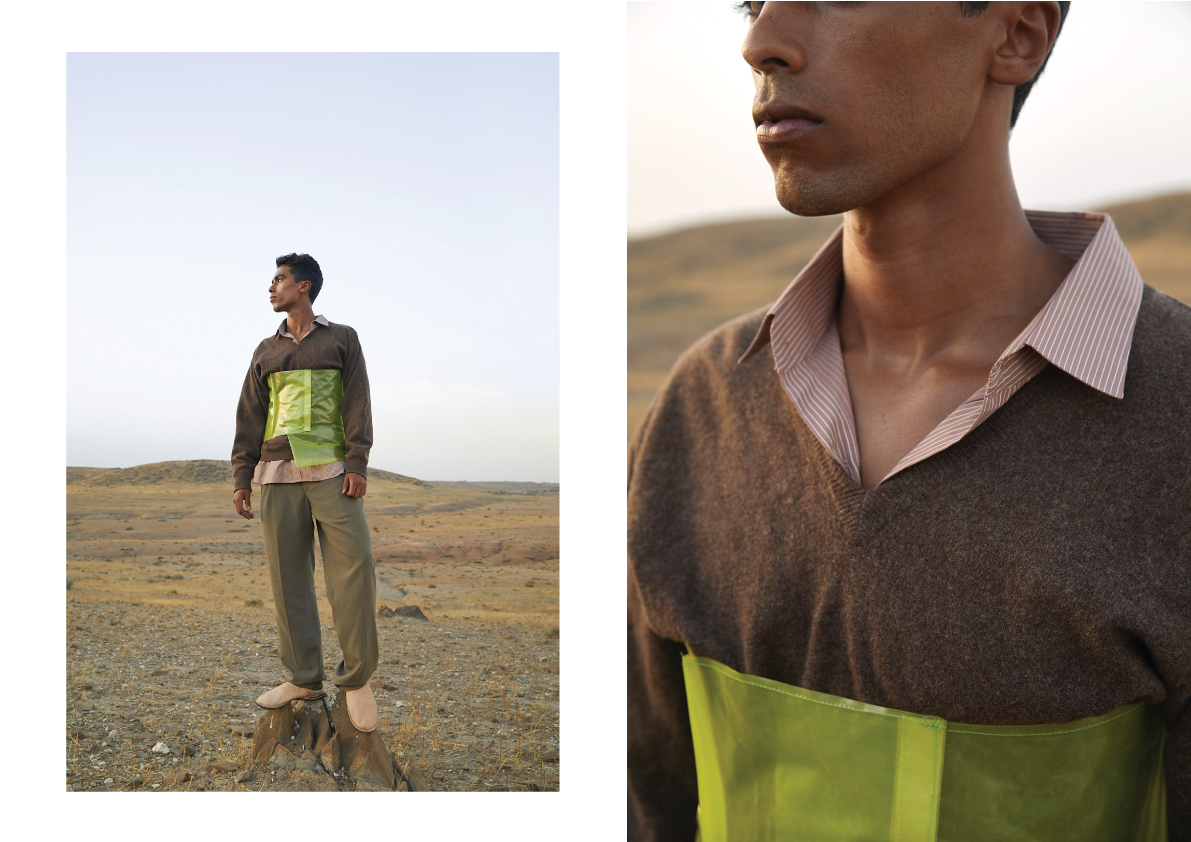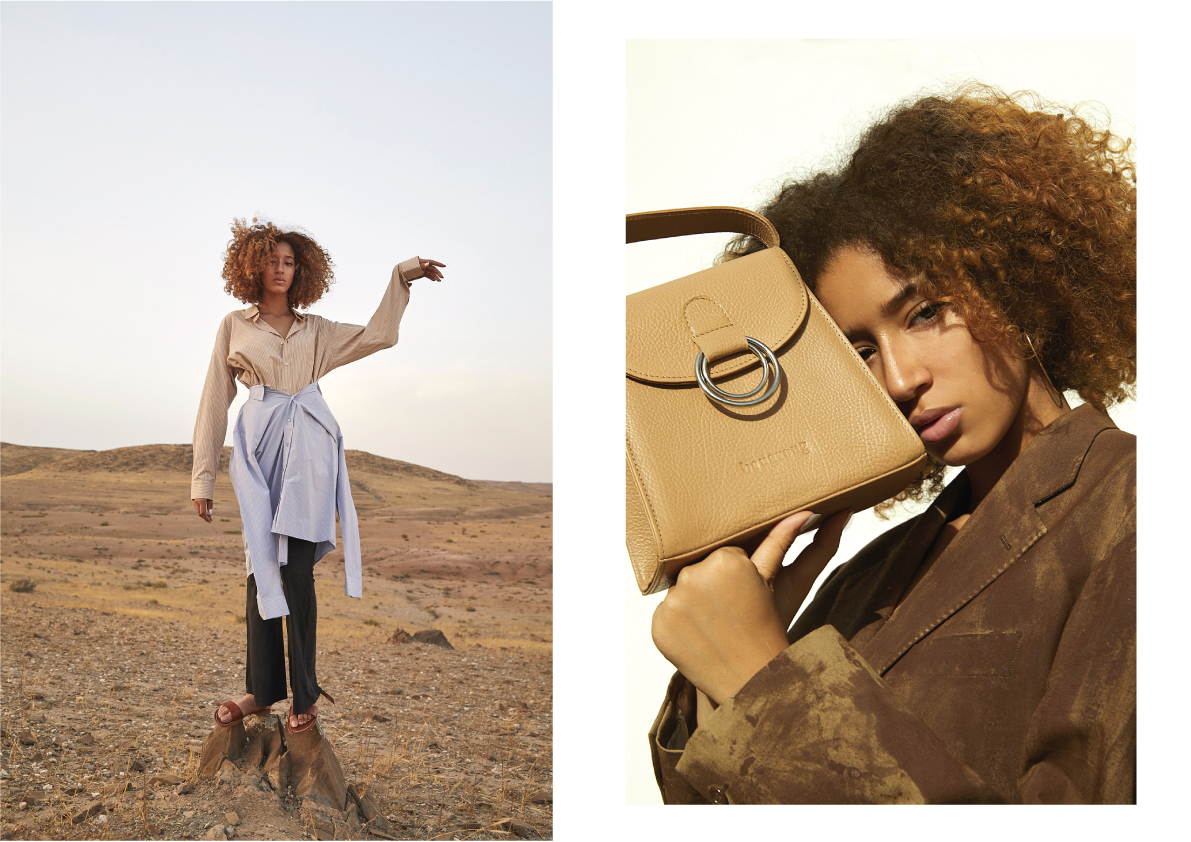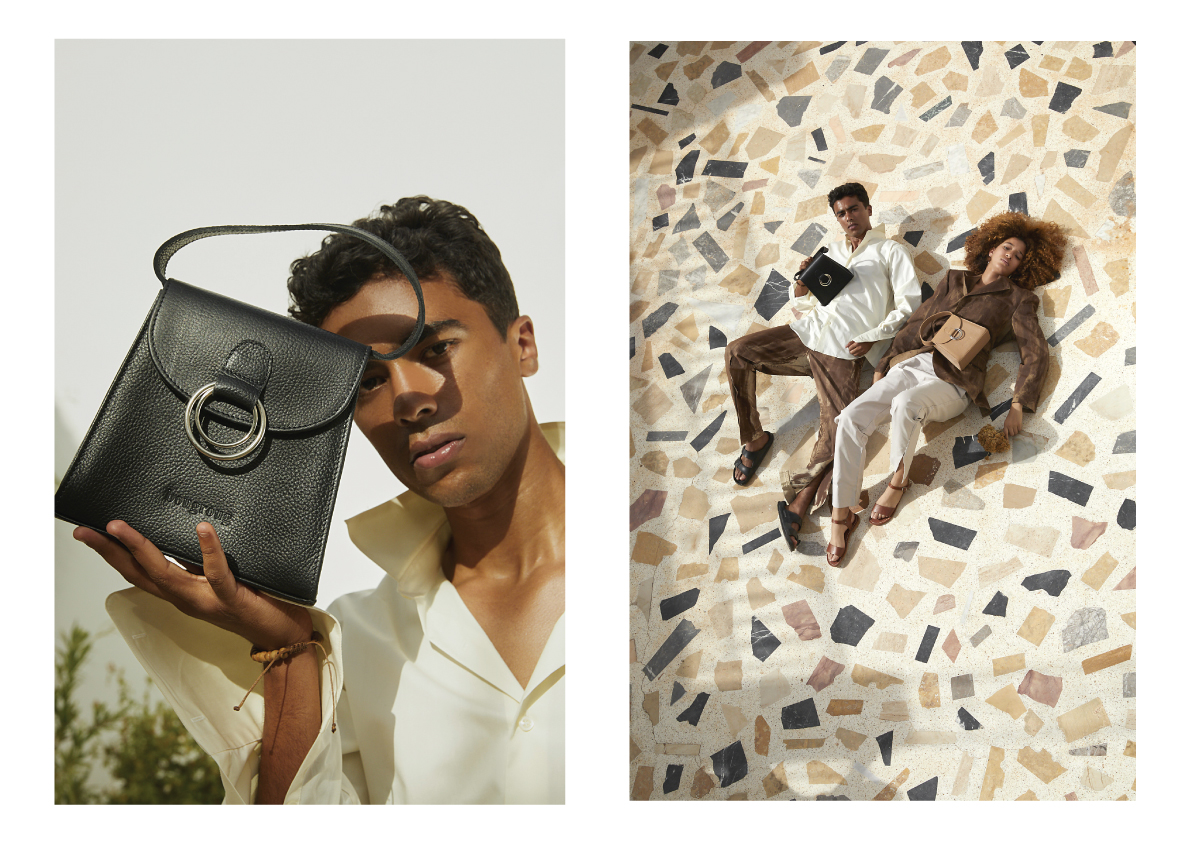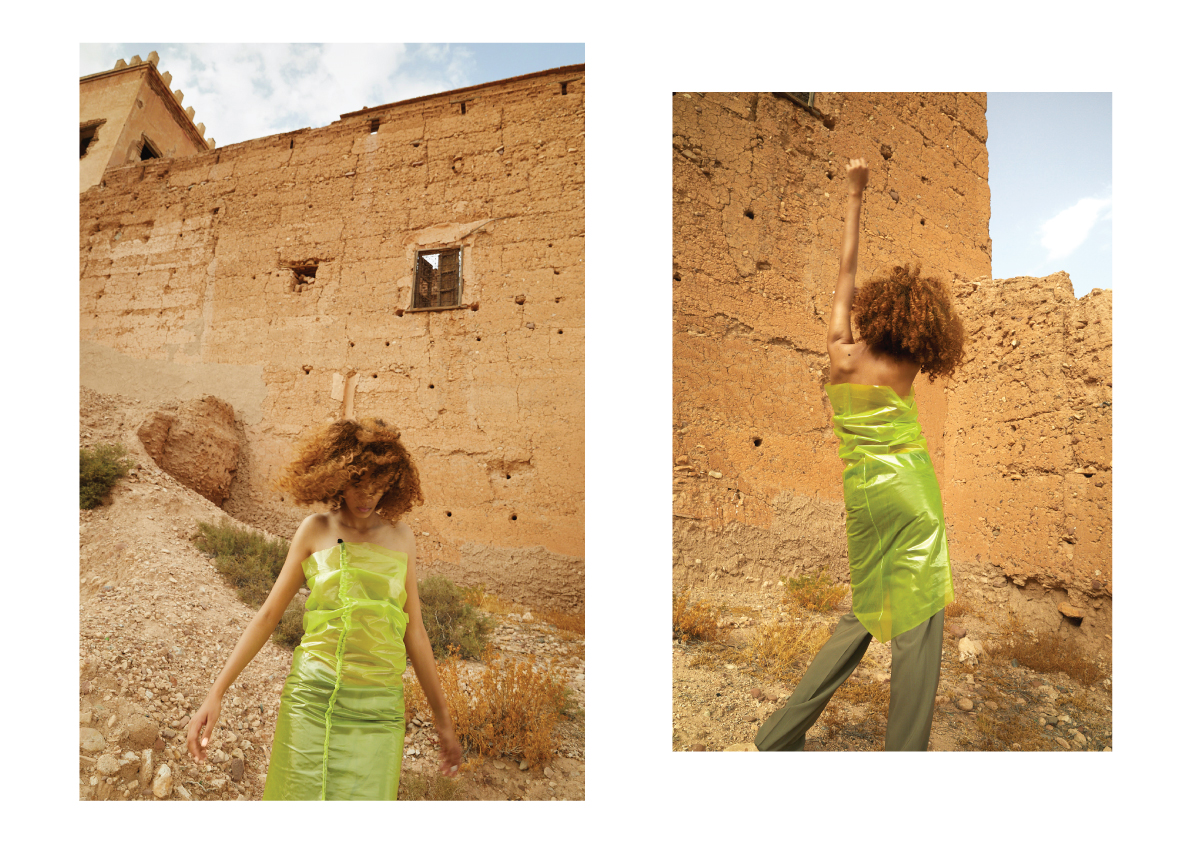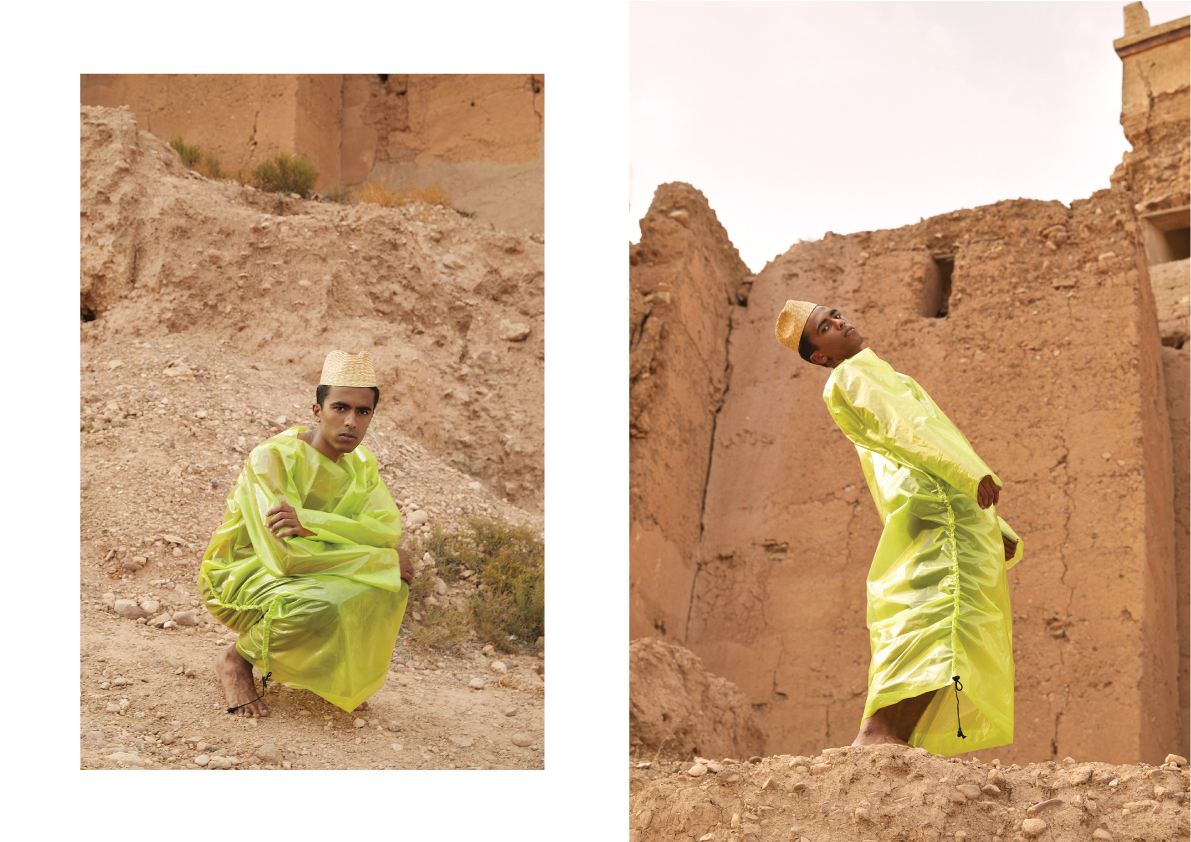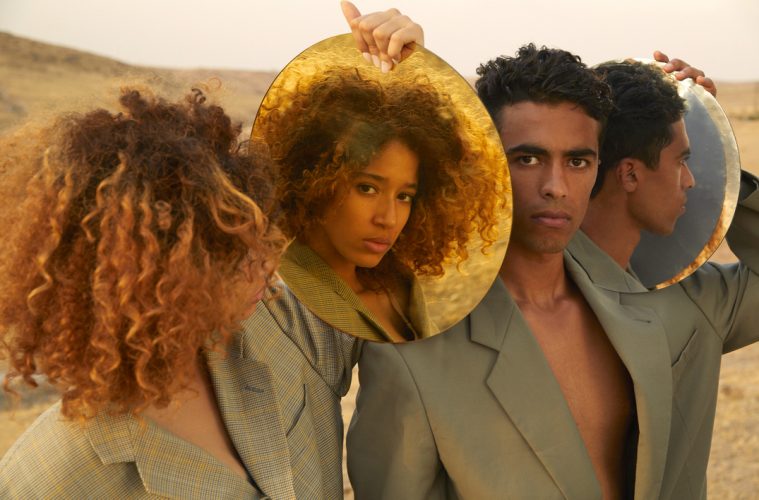Photographed by Beste Zeybel
Edited by Salman Husain
Designer and Stylist: Anwar Bougroug
Characters: Nassr and Hiba
Special thanks to Amin
Fashion designer Anwar Bougroug’s latest collection explores a new wave of Morrocan youth expressing gender in fluid and diverse ways that challenge traditional ideas of gender in Moroccan society. “A new generation of Morrocans are pioneering a more gender equal society and championing progressive views on gender identity, creating change along the way.” HUMA is a reflection of Bougroug’s personal experience and the societies around him, especially as society relates to the evolving perceptions and expressions of gender.
Shot by Istanbul-based photographer Beste Zeybel in Marrakesh, Morocco, Bougroug’s last collection “HUMA” is an ode to a Morocco filled with contradictions that emerge in the tension between tradition and evolving social norms.
Designer, stylist, writer and founder of brand Bougroug, Anwar Bougroug sat down to talk with My.Kali about the inspiration behind HUMA, the role of gender in his work, and his home country of Morocco.
Tell us about your background. Where did you grow up and what was your upbringing like?
I was born in Oslo in Norway and lived there for the first 22 years of my life. I come from a Moroccan family and I used to travel to Tanger every summer with them. I am now based in Morocco, reflecting on my background and trying to understand better where I come from, but on my own terms and in my own pace. I launched my brand here, which was a great success and which I never thought would have been possible if it wasn’t for the fact that it was based in Morocco.
Words can often have several interpretations and mean different things to different people. How do you define the word ‘fashion’?
Fashion for me is clothing, what we wear to express who we are to the outside world. It’s also become a way to show wealth, social status, religion and what tribe or subculture you belong to. Fashion can also be described as the only wearable form of art, and if we change out the word fashion with the textile industry, you have an industry that has the most employees of them all. It recruits people from all over the world, making it one of the most globalized industries we have today.
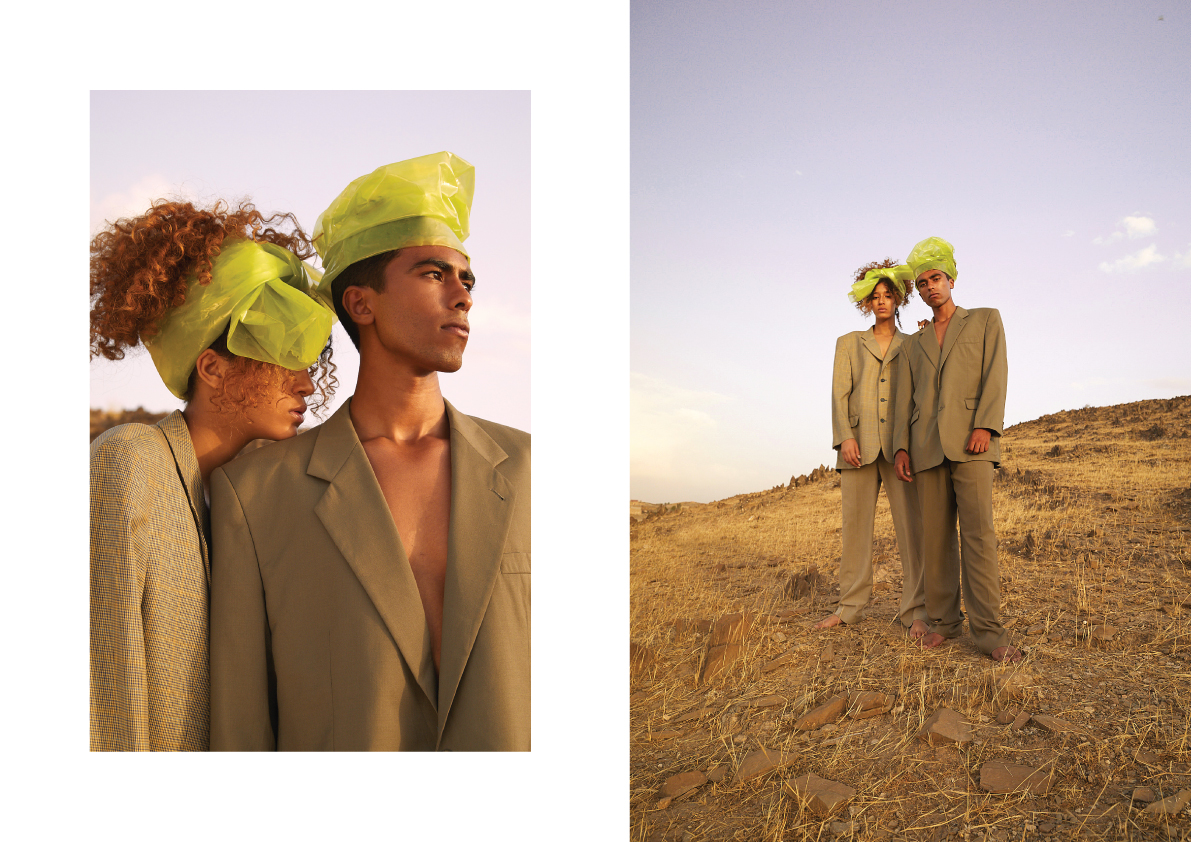
Some people argue that the fashion and beauty industry feeds on our insecurities and tries to sell us unrealistic “solutions” or “cures” to many of our life problems. Do you think that fashion also has the potential to combat this phenomenon?
In my opinion, fashion and beauty have a tendency to act as what you describe: the monster that tells us we’re never good enough and then offers us the ‘perfect solution’ for us to purchase. However, if we view fashion historically, it’s also the industry that pushes the boundaries and advances political and social discussions through storytelling and product development. If it’s about gender, sexuality, inclusivity, diversity etc., fashion brands are the ones that dare to use it as a way to distinguish themselves from other brands. However, some brands clearly capitalize on the debates we’re having, which is something people are not getting away with anymore. The new generation can smell when a brand uses someone else’s struggle to sell their products, and I think that’s what’s interesting about fashion today: it’s become very democratized and the customer is the boss.
Why did you choose the word Huma/They/Them for this spread/collection?
I chose ‘huma/them’ for the simple reason that we don’t think about gender at all when we create. We believe in a universe that is totally gender free, no he or she, just they and them. We want to encourage people to think that there aren’t just two ways of viewing gender. We want to highlight the importance of diversity and inclusivity in the Arab world.
The collection ‘HUMA’ is in and of itself amazing, but do you have bigger aspirations for ‘HUMA’ as a project that goes beyond a fashion collection? And who and what inspired you during the design of this collection?
HUMA, as a project, was a way to create a perfect universe, in other words, the Bougroug universe. A world where everybody is accepted for who they are and what they stand for, even in their way of dressing. I think gender-based clothing is old and outdated. We need to move on to a new place and time where clothing is free from gender. This collection was just that: beautiful pieces styled together using Moroccan models to tell a real-life story, a story about a new generation that wants freedom and equality. It was shot by the amazing Turkish photographer, Beste Zeybel, a woman that shares the same values as the Bougroug universe. We both wanted to create a perfect world that you could escape to while looking at the photos. The feedback has been fantastic and we’re so happy so many people around the world can relate to our universe and story.
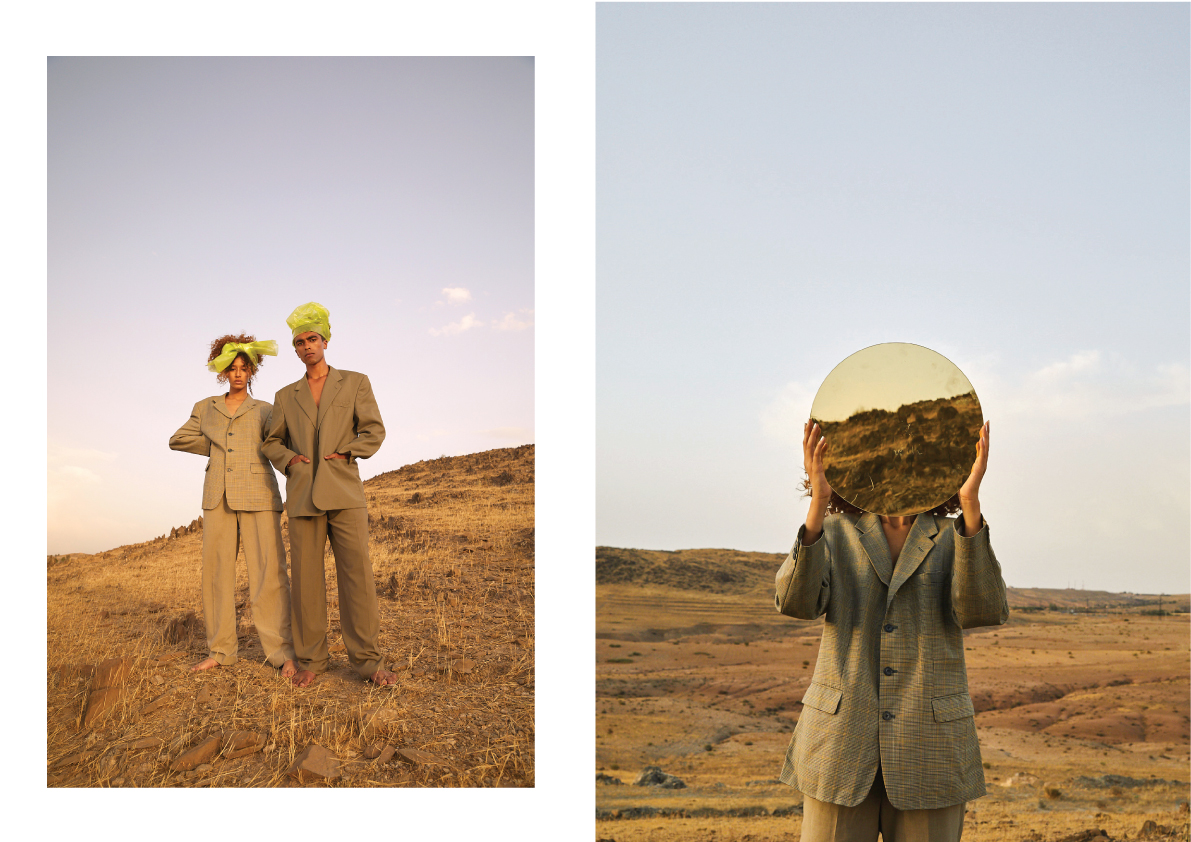
You have said that observing ethical practices in your work is important. How do you apply ethical practices while working in fashion?
For me, it’s extremely important that the suppliers feel they are making enough money on what they do. We create high-quality items that are made with handcraft techniques that are centuries old. We want these craftspeople to feel that what they are doing is meaningful and that they can live on their craft. We never want to push down prices. We want to focus on quality and building healthy relationships with our manufacturers. So far ,it’s worked great and our craftspeople show great loyalty and continue to create amazing products for us.
As a brand, we work with leather from the food industry and textiles and materials are sourced locally. We create our packaging here, as well as our branding, our product and content creation is all done in Morocco. We hire freelance experts to produce our collections and products, which is especially important for women that sometimes want to work in the privacy of their homes.

As part of a digital platform, we’re interested to know more about your design process, specifically in terms of the technology that you use. Can you tell us a bit about that?
I use Adobe Illustrator, Photoshop, Indesign and Lightroom when I design a collection. I work with fashion brands helping them create collections and stories season after season, and all these tools are industry standards. You have to know these digital tools in order to work with brands, suppliers and manufacturers in the fashion industry today.
